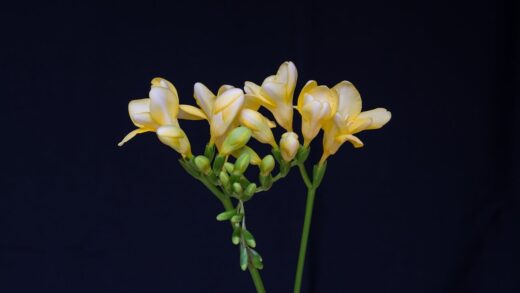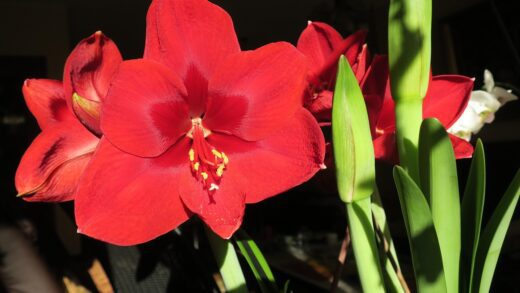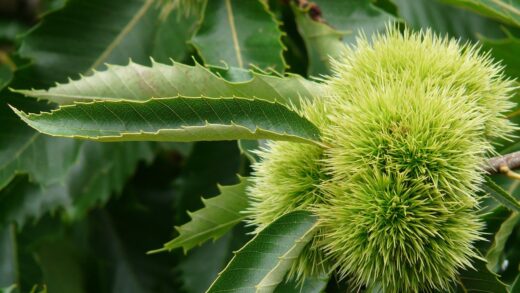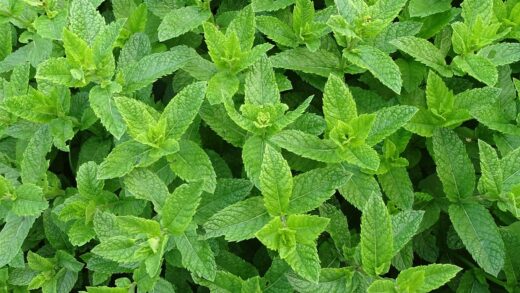While moss rose is renowned for its toughness and resilience, it is not entirely immune to the challenges posed by diseases and pests. For the most part, these issues arise when the plant’s fundamental growing conditions are not met, particularly with regard to water and air circulation. An observant gardener who understands the plant’s needs can prevent most problems before they start. By learning to identify the common culprits, from fungal diseases spurred by excess moisture to sap-sucking insects, you can take swift and effective action to protect your vibrant floral display and ensure your plants remain healthy and vigorous throughout the season.
Proactive disease and pest prevention
The most effective strategy for managing diseases and pests on moss rose is prevention. A healthy, vigorous plant growing in its ideal conditions is far less susceptible to attack than a stressed one. The cornerstone of prevention is providing the right location and soil. This means planting in a site that receives at least six hours of full, direct sun daily and in soil that is exceptionally well-draining. Avoiding wet, heavy soils is the single most important step you can take to prevent root rot and other fungal issues.
Proper spacing between plants is another critical preventative measure. Although moss rose is often used as a dense ground cover, it is important to avoid overcrowding. Good air circulation around each plant helps to keep the foliage dry and reduces the humidity at the soil level, creating an environment that is less hospitable to fungal spores. When planting, follow the recommended spacing guidelines for your specific variety, which is typically around six to eight inches apart.
Watering technique plays a huge role in disease prevention. As a rule, always water moss rose at the base of the plant, delivering moisture directly to the soil and avoiding the leaves and flowers. Wet foliage is a primary invitation for fungal diseases like powdery mildew and botrytis. If overhead watering is unavoidable, do it early in the morning so the sun has plenty of time to dry the plants thoroughly. Furthermore, adhering to a deep but infrequent watering schedule prevents the waterlogged conditions that lead to root rot.
Maintaining good garden hygiene is also essential. Regularly remove any weeds that compete for resources and can harbour pests. At the end of the growing season, be sure to clear away all dead moss rose foliage and debris. This cleanup prevents the overwintering of fungal spores and insect eggs that could emerge to infect new plants the following spring. A clean garden is a healthy garden and your first line of defence against potential problems.
More articles on this topic
Identifying and managing common fungal diseases
Root rot is arguably the most lethal disease for moss rose, and it is caused by various soil-borne fungi that thrive in waterlogged, anaerobic conditions. The symptoms of root rot include yellowing leaves, wilting (even when the soil is wet), and mushy, blackened stems at the soil line. If you were to examine the roots, you would find them brown and soft instead of white and firm. Prevention through excellent drainage is the only real cure; once it is advanced, the plant is usually impossible to save. If caught early, you can try to reduce watering and improve drainage.
Botrytis blight, also known as grey mould, is another common fungal issue, especially during cool, damp, or highly humid weather. It appears as a fuzzy, greyish-brown mould on flowers, buds, and stems, often causing them to rot and collapse. Infected flowers will look water-soaked and quickly decay. To manage botrytis, promptly remove and destroy any infected plant parts to prevent the spread of spores. Improving air circulation by thinning out plants can also help significantly. In severe or persistent cases, a fungicide may be necessary.
Powdery mildew is a fungal disease that is easy to identify by the characteristic white, dusty patches that appear on the leaves and stems, looking as though they have been sprinkled with talcum powder. While it is less common on moss rose than on other plants like zinnias or phlox, it can still occur in humid conditions with poor air circulation. As with other fungal issues, prevention through proper spacing and dry foliage is key. If it appears, remove affected leaves and consider applying neem oil or a horticultural fungicide, which can help control its spread.
Another issue to be aware of is rust, a fungal disease that causes small, reddish-brown pustules to form on the undersides of the leaves. The upper surfaces of the leaves may show yellow spots. While not as common on Portulaca, it can happen. Management involves removing infected leaves as soon as they are spotted to prevent the disease from spreading. Ensuring foliage stays dry and that plants are not overcrowded will make the environment less conducive for the rust fungus to establish itself.
More articles on this topic
Dealing with common insect pests
Aphids are the most frequent insect pests you are likely to encounter on moss rose. These are small, pear-shaped, sap-sucking insects that can be green, black, or pink and tend to cluster on new growth, stems, and flower buds. Their feeding can cause leaves to curl and become distorted, and they excrete a sticky substance called honeydew, which can lead to the growth of sooty mould. For small infestations, a strong blast of water from a hose is often enough to dislodge them.
For more persistent aphid problems, insecticidal soap or horticultural oil, such as neem oil, are effective and relatively low-impact solutions. These products work by smothering the insects and must be applied thoroughly, paying special attention to the undersides of leaves where aphids often hide. It is best to apply these treatments in the cool of the early morning or evening to avoid the risk of sun scorch on the foliage. Multiple applications may be necessary to control the population as new aphids hatch.
Spider mites are another potential pest, especially in hot, dry conditions. These tiny arachnids are difficult to see with the naked eye, but their presence is indicated by a fine, web-like material on the plant and a stippling or bronzing of the leaves as they suck the cell contents. Like aphids, they can be controlled with a strong spray of water to increase humidity and dislodge them, or by using insecticidal soap or neem oil. Ensuring plants are not overly water-stressed can also make them less attractive to spider mites.
Although less common, other pests like whiteflies or thrips might occasionally visit your moss rose. Whiteflies are tiny, moth-like insects that fly up in a cloud when disturbed, while thrips are small, slender insects that can cause silvery streaks on leaves and deform flowers. The management for these pests is similar to that for aphids and spider mites, focusing on sprays of insecticidal soap or neem oil. Regular monitoring of your plants will help you catch any pest problem early before it becomes a major infestation.
Recognizing environmental stress mimicking diseases
Sometimes, what appears to be a disease is actually a symptom of environmental stress. For example, yellowing leaves are a common sign of trouble, but they do not always point to a pathogen. In moss rose, the most likely cause of yellowing leaves is overwatering, which leads to root rot. Before reaching for a fungicide, always assess your watering habits and soil drainage first. Adjusting your irrigation schedule is often the only “cure” that is needed.
Leaf scorch is another environmental issue that can be mistaken for a disease. This presents as dry, brown, or crispy edges on the leaves. While moss rose loves sun, a plant that has been recently transplanted or is not properly hardened off can suffer from scorch if suddenly exposed to intense, direct sunlight. Similarly, container plants with dry soil can also show signs of scorch on hot, windy days. The solution is to ensure adequate water is available to the roots during establishment and to properly acclimate plants to full sun conditions.
Nutrient deficiencies can also cause symptoms that mimic diseases, such as pale or discoloured foliage. While moss rose has low nutrient needs, a plant growing in completely sterile sand or an old, depleted potting mix might show signs of distress. A general yellowing could indicate a lack of nitrogen, though this is rare. Before assuming a disease is present, consider the last time the soil was amended. A single, very light feeding with a balanced, diluted fertilizer can often resolve the issue if it is indeed a nutrient deficiency.
Finally, poor flowering is not a disease but a clear symptom of an environmental problem. The number one cause of a moss rose failing to bloom is insufficient sunlight. If your plant looks healthy and green but is producing few or no flowers, it is almost certainly not getting the six to eight hours of direct sun it needs. The only remedy is to move the plant to a sunnier location. Over-fertilizing, particularly with nitrogen, is the second most likely cause of this disappointing outcome.
Integrated pest management (IPM) strategies
Integrated Pest Management (IPM) is a holistic and environmentally sensitive approach to dealing with garden pests and diseases. It prioritizes prevention and a combination of control methods rather than immediately resorting to chemical pesticides. For moss rose, an IPM strategy begins with selecting the right plant for the right place—full sun and well-drained soil—to ensure a strong, healthy foundation. A healthy plant is naturally more resistant to problems.
Regular monitoring is a key component of IPM. Take time to walk through your garden and inspect your plants closely every few days. Look under leaves and around flower buds. Catching a small aphid colony or the first signs of powdery mildew early makes it much easier to manage with simple, non-chemical methods. Early detection allows you to simply remove an affected leaf or wash away a few pests before they have a chance to multiply and spread throughout your garden.
IPM encourages the use of mechanical and biological controls first. This includes actions like hand-picking larger pests, using strong water sprays to dislodge smaller ones like aphids, and setting up traps. It also involves fostering a garden environment that is welcoming to beneficial insects. Ladybugs, lacewings, and hoverflies are natural predators of aphids. Planting a diversity of flowering plants can attract these helpful allies to your garden, providing a natural and self-sustaining form of pest control.
Chemical controls are used only as a last resort in an IPM program, and the least toxic options are chosen first. Products like insecticidal soaps and horticultural oils are preferred over broad-spectrum synthetic pesticides, which can harm beneficial insects and pollinators. If a stronger intervention is deemed absolutely necessary, it should be applied judiciously and targeted specifically at the problem pest, following all label instructions carefully to minimize a negative impact on the wider garden ecosystem.


















